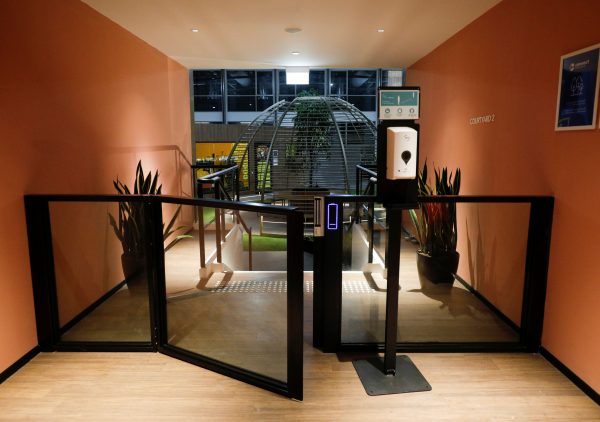Before the pandemic, one could hardly ever have imagined a radical reduction in international human movement in an age of hyper-globalisation. The effect of COVID-19 on international mobility can be characterised as a ‘diseasescape’ where diseases flow across borders just as easily as money, news, people and ideas.
The Asia Pacific region was the hardest-hit by the tourism shutdown, suffering a decline of 84 per cent in international arrivals from 360 million in 2019 to 57 million in 2020. COVID-19 returned tourism to the level of three decades ago when only the affluent could travel, largely excluding Asians. Only in the early 20th century was international travel more open to Asians with increasing disposable income. Since 2012, tourists from mainland China have emerged as the largest national group in international tourism. Pandemic-related border closures have halted this.
Travel bubbles provide an interim solution to this decrease in travel. Point-to-point travel arrangement between governments will effectively divide global destinations into spheres of mobility. Some places will become more accessible for certain populations in the world while many others remain closed. Only affluent individuals from ‘low-risk’ countries will be allowed to move through these spheres of mobility. This will result in a new mobility hierarchy, intricately entwining state authorities, capitals and health security, complicating cross-border governance and regional politics.
Relatively low infection rates in many Asia Pacific countries make travel bubbles a plausible solution. But plans have often been postponed or cut short when COVID-19 cases have risen.
Singapore had been one of the most active in Asia in creating one-way and two-way travel bubbles, especially because of its upcoming World Economic Forum scheduled for August 2021. It tried to implement a travel bubble with Hong Kong in November 2020 but this was shelved due to fluctuations in COVID-19 cases. Singapore finally announced the bubble would open in late-May 2021 with only 200 flight seats per day in each direction. Flight ticket prices immediately shot up 500 per cent. This first Hong Kong–Singapore travel bubble will probably be postponed again due to an outbreak of coronavirus at Changi airport in Singapore.
Hong Kong has also imposed compulsory vaccination on Hong Kong travellers before departure, but did not require the equivalent for incoming Singaporean visitors. This self-imposed and unequal travel bubble requirement has drawn much criticism from the Hong Kong public.
The situation in other Asian countries is mixed. Japan has decided to host the delayed Olympic Games on a closed-door basis against a background of intense public backlash. Thailand has created a very limited travel bubble by offering Phuket resorts as ‘quarantine centres’ to lure back long-stay tourists. Vietnam attempted a travel bubble with Japan in November 2020, but severe restrictions ultimately stymied the effort. Taiwan arranged its first travel bubble with the small island of Palau in April 2021.
China has shown effective COVID-19 control, yet its efforts to implement travel bubbles have also been slow and minor. Some reduction in quarantine requirements was introduced in late-2020, but only for specific city-to-city flights between China and South Korea. Australia and New Zealand have applied strict internal lockdown policies and have been cautious about reopening borders. Only in April 2021 was the long-discussed trans-Tasman travel bubble formally approved.
While all these travel bubble initiatives in Asia and the Pacific are important, the net result so far has been very little travel. Ironically, countries best at controlling COVID-19 and in the best position to develop travel bubbles with each other are also the most risk adverse and intent on maintaining control of COVID-19. Even if travel bubbles remain small, they show a retrenchment of international mobility from a set of widely shared global rules to specific rules between individual countries. Every country has an opportunity to rethink its rules for allowing people to enter and conditions for citizens to leave.
The pandemic has provided a global pause for national reflection on international mobility. Travel bubble packages have largely been seen as a way of governing health security through health certificates, COVID-19 test results, official vaccination records and travel histories. But they can also serve other non-health-related geopolitical purposes. China and Australia are unlikely to open any travel bubbles in the short term because of diplomatic tensions, even though the health risks are relatively minor. Similarly, a Hong Kong official recently suggested Taiwan was not in the government’s travel bubble considerations despite relatively low health risks.
The new diseasescape shaped by COVID-19 has disrupted global travel. It will continue to intertwine with other scapes — ideas, money, media, politics and crime — at both the national and global levels. New arrangements like travel bubbles have re-arranged the globe into spheres of mobility. How this new mobility geography will impact the global political economy and global power politics remains to be seen.
Yuk Wah Chan is Associate Professor in the Department of Asian and International Studies at the City University of Hong Kong (CityU).
David Haines is Emeritus Professor at George Mason University.

